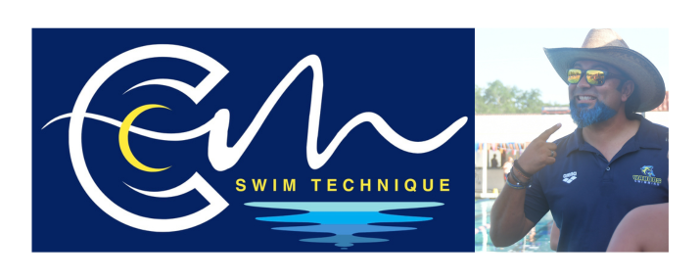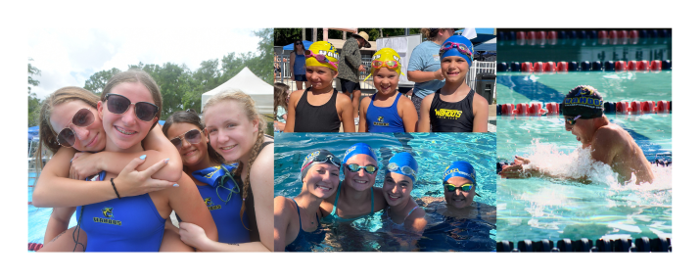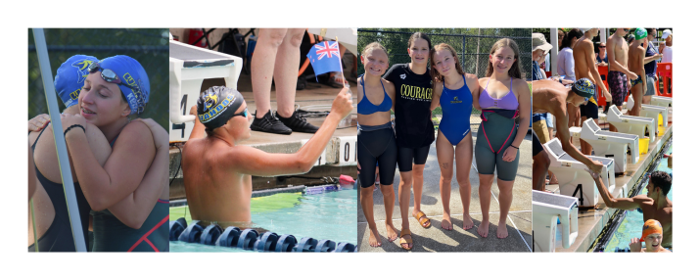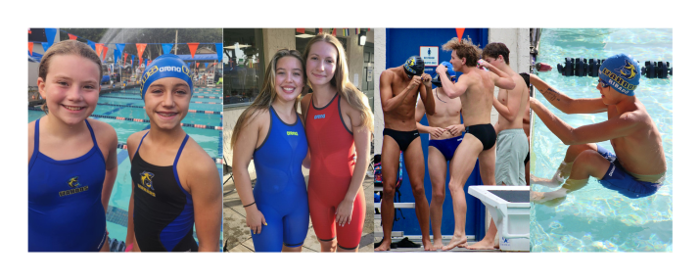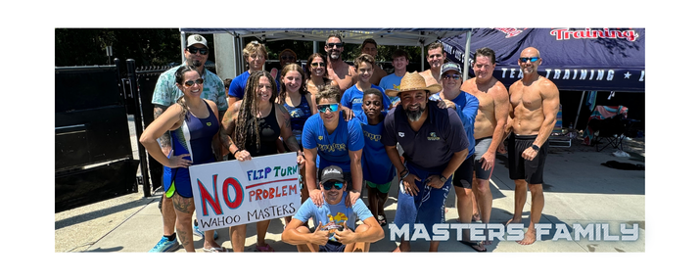BEFORE THE MEET STARTS
-
Arrive at the pool at least 15 minutes before the scheduled warm-up time begins. This time will be listed in the meet information handed out to all swimmers and also in the team newsletter.
-
Upon arrival, find a place to put your swimmer's blankets, swim bags and/or sleeping bags. The team usually sits in one place together, so look for familiar faces.
-
Find the check-in place. Usually, parents are not allowed on deck, so this may be the responsibility of your swimmer or your swimmer’s coach. Make sure your swimmer checks in with his or her coach! Look for posted instructions in the check-in area.
-
Usually one will need to circle the swimmer's name or "#" before each swimmer's name, in each event he or she is swimming, that day. If this is not done, the swimmer will not be allowed to swim that event. Check-in is required so that the people running the meet know who is actually at the meet. After check-in, the meet administrators "seed" the swimmers into heats. Heat and lane assignments will be posted, so be sure your swimmer knows where to look!
-
Sometimes the meet is "pre-seeded" and no check-in is required. You and your swimmer can find heat and lane assignments by purchasing a program.
-
-
Once "checked in," write or have the swimmers write each event-number on his or her hand with black sharpie. Keep one in your child's swim bag. This helps him/her remember what events he/she is swimming and what event number to listen or watch for.
-
Your swimmer now gets his/her cap and goggles and reports to the pool and/or coach for warm-up instructions. It is very important for all swimmers to warm-up with the team. A swimmer's body is just like a car on a cold day-he/she needs to get the engine going and warmed-up before he/she can be competitive in the pool.
-
After warm-up, your swimmer will go back to the area where his/her team is sitting and wait there until his first event is called. This is a good time to make sure he/she goes to the bathroom if necessary, gets a drink, or just gets settled in.
-
The meet will usually start about 10-15 minutes after warm-ups are over.
-
According to USA Swimming rules (because of insurance purposes), parents are not allowed on deck unless they are serving in an official capacity. Similarly, all questions concerning meet results, an officiating call, or conduct at a meet, should be referred to a coach. He or she in turn, will pursue the matter through the proper channels.
-
Psyche Sheet or Heat Sheets. A psyche sheet is usually available for sale in the lobby or concession area of the pool. It lists all swimmers in each event in order of "seed time". When the team entry is sent in, each swimmer and his/her previous best time (up to the date that the entry was submitted) in that event is listed. If the swimmer is swimming an event for the first time, he/she will be entered as a "no-time" or "NT". A "no-time" swimmer will most likely swim in one of the first heats of the event. A Heat Sheet may be available closer to the start of the meet that lists the actual heat and lane in which the swimmer will be competing.
MEET STARTS
-
It is important for any swimmer to know what event numbers he/she is swimming (again, the reason they should have the event numbers on their hand). He/she may swim right away after warm-up or they may have to wait awhile.
-
Most meets are computerized. There are generally two ways a swimmer gets to his/her lane:
-
A swimmer usually reports directly to his/her lane for competition at least two heats before he/she actually swims. Check with your swimmer's coach for specific instructions.
-
In some novice meets, a swimmer's event number will be called, usually over the loudspeaker, and he/she will be asked to report to the "clerk of course" or “bullpen.” Swimmers should report with his/her cap and goggles.
-
Generally, girls events are odd-numbered and boys events are even-numbered. Example: "Event #26, 10-Under Boys, 50 freestyle. Swimmers MUST report to the coach 5 heats before their event.
-
-
-
The swimmer swims his or her race.
-
After each swim:
-
He/she is to ask the timers (people behind the blocks at each lane) his/her time.
-
Depending on the coaches instructions, the swimmer may be asked to do some recovery swimming if a "warm down" pool or lanes are available.
-
The swimmer should then go immediately to his or her coach. The coach will discuss the swim with each swimmer. Some coaches may wish to talk with the swimmer before her recovery swim.
-
-
Generally, the coach follows these guidelines when discussing swims:
-
Positive comments or praise
-
Suggestions for improvement
-
Positive comments
-
-
Things you, as a parent, can do after each swim:
-
Tell him how great he did! The coaching staff will be sure to discuss stroke technique with him. You need to tell him how proud you are and what a great job he did.
-
Take him back to the team area and relax.
-
This is another good time to check out the bathrooms, get a drink or something light to eat.
-
-
The swimmer now waits until his next event is called and starts the procedure again. When a swimmer has completed all of his/her events, the swimmer and their parents can go home. You, as the parent, must check with the coach before leaving to make sure your swimmer is not included on a relay. It is not fair to the other swimmers who may have stayed to swim on a relay team and your swimmer is not there to swim their position on the relay. If all four swimmers are not present, the relay will have to scratch the event.
-
Results are usually posted somewhere in the facility. Awards are often collected for the team and given to the coach at the end of the meet. The coach will give the awards to the swimmers at a later time.
REFERENCE:
"SWIM MEET BASICS." USA Swimming. N.p., n.d. Web. 05 Mar. 2014.
www.usaswimming.org





